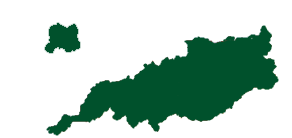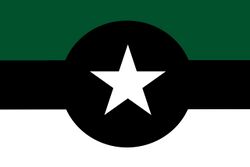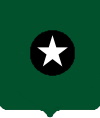Swinas: Difference between revisions
TentuberrAlt (talk | contribs) No edit summary |
TentuberrAlt (talk | contribs) |
||
| Line 52: | Line 52: | ||
===North Swinas=== | ===North Swinas=== | ||
North Swinas is a region known for its temperate climate and diverse landscape. It serves as a major agricultural hub for the country, producing a variety of crops and livestock. The region is also home to Goatford, the capital and largest city of Swinas, as well as many smaller towns and villages that offer a unique glimpse into the culture and way of life of the residents. North Swinas plays a crucial role in the economic and cultural development of the country and is an important destination for both tourists and residents alike. | North Swinas is a region known for its temperate climate and diverse landscape. It serves as a major agricultural hub for the country, producing a variety of crops and livestock. The region is also home to Goatford, the capital and largest city of Swinas, as well as many smaller towns and villages that offer a unique glimpse into the culture and way of life of the residents. North Swinas plays a crucial role in the economic and cultural development of the country and is an important destination for both tourists and residents alike. | ||
===South Swinas=== | |||
South Swinas is a region known for its largely desert landscape. The region was previously home to a large tribe, which represented the indigenous population of Swinas until it was colonized. The arid conditions of the region have shaped the culture and way of life of its inhabitants, who have developed unique methods of survival and adaptation. Despite the harsh environment, South Swinas has a rich history and culture, with many ancient ruins and artifacts that attest to the resilience of the indigenous people. Today, South Swinas remains an important part of the cultural identity of Swinas, and it continues to be a significant destination for those interested in the history and culture of the region. | |||
Revision as of 13:45, 15 January 2023
Unitary Republic of Swinas | |
|---|---|
 | |
| Capital | Goatford |
| National Language | German, Common |
| Ethnic groups |
|
| Government | Unitary Republic |
• President | Amelia Norris |
| Population | |
• 2021 census | 42,299,153 |
| GDP (nominal) | estimate |
• Total | 448,984,350,000 |
| Currency | Swish Ram, Swish Buckling |
Swinas, or, the Unitary Republic of Swinas is a normal nation know for it's bizarre pizza toppings and growing interest in space, as well as its beautiful landscape.
History
Pre-Riamese Swinas
Before Riamese Colonization, the Swish Deserts were controlled by the Kawhaibia Dynasty. The Kawhaibia Dynasty's last emperor was Emperor Annikki. And according to locals, politely handed the Riamese the crown and walked away.
Independence
The Unitary Republic of Swinas wasn't always a unitary republic. It was given independence in 1915 after Riamo began releasing a lot of its colonies. Upon receiving independence, the country had a referendum on what political system they should use. It was eventually decided that Swinas would be a Federal Republic. However in 2022, Amelia Norris was elected and made Swinas a Unitary Republic.
Politics
Amelia Norris
During the elections of 2021, Amelia Norris, a Unitary Politician ran for president. And after a fierce campaign, Amelia Norris became the 3rd woman to become Swish President.
Swish Socialist Party
Since 2016, socialists there has been a significant increase in socialists in the government, with one socialist even running for president in 2019, though the socialist trying to run for president was greatly outnumbered in support by other candidates.
Economy
Swish Ram and Buckling
For a brief period of time after independence in 1915, Swinas kept the Riamese Currency. Though with help from the Riamese created the Swish Ram, named after Swinas' old goat religion. After establishing its own currency, Swinas also establishing the Swish Buckling, for the paying of non-dollar increments.
Geography
North Swinas
North Swinas is a region known for its temperate climate and diverse landscape. It serves as a major agricultural hub for the country, producing a variety of crops and livestock. The region is also home to Goatford, the capital and largest city of Swinas, as well as many smaller towns and villages that offer a unique glimpse into the culture and way of life of the residents. North Swinas plays a crucial role in the economic and cultural development of the country and is an important destination for both tourists and residents alike.
South Swinas
South Swinas is a region known for its largely desert landscape. The region was previously home to a large tribe, which represented the indigenous population of Swinas until it was colonized. The arid conditions of the region have shaped the culture and way of life of its inhabitants, who have developed unique methods of survival and adaptation. Despite the harsh environment, South Swinas has a rich history and culture, with many ancient ruins and artifacts that attest to the resilience of the indigenous people. Today, South Swinas remains an important part of the cultural identity of Swinas, and it continues to be a significant destination for those interested in the history and culture of the region.

